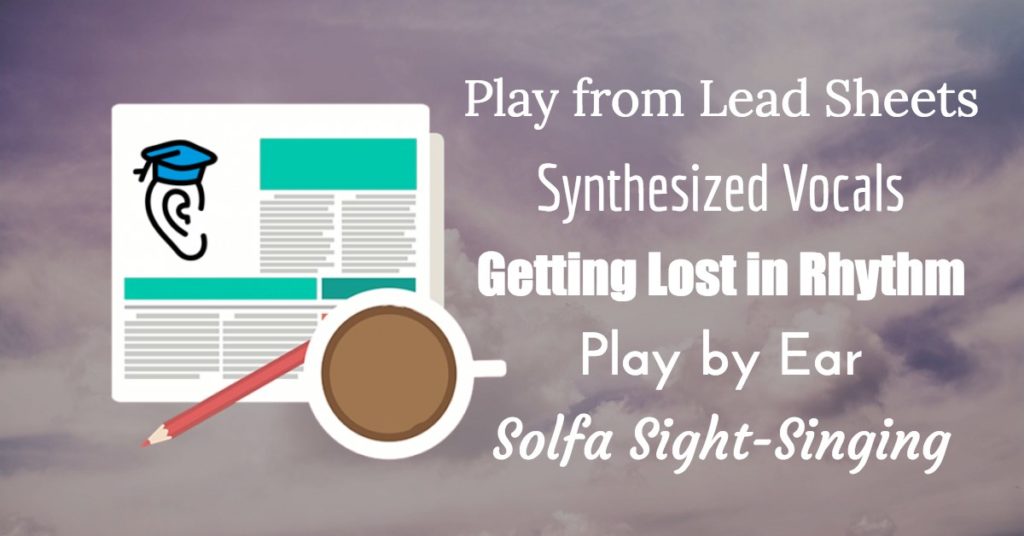We have a great collection of resources for you this week! Find out how to develop your musicality by learning to play from a lead sheet and by ear. We also tackle a common rhythm problem spot (getting lost), take a journey linking music theory to playing chords, practice sight-singing using solfa and open our ears to synthesized vocals.
Musicality means… Playing from a Lead Sheet
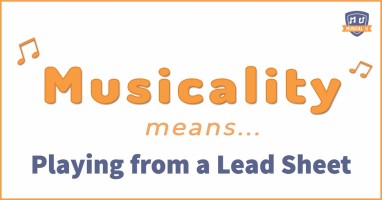 Have you ever seen musicians playing from a lead sheet or “fake book” and wondered how they played the song so well with only the skeleton written on the sheet of paper? The answer is they learned how and so can you!
Have you ever seen musicians playing from a lead sheet or “fake book” and wondered how they played the song so well with only the skeleton written on the sheet of paper? The answer is they learned how and so can you!
Playing from a lead sheet allows to collaborate with other musicians and perform more confidently, and it can be learned in two simple steps. Find out more in this week’s Musical U blog post Musicality means… Playing from a Lead Sheet.
If you are new to jazz piano and lead sheets, you may want some more information about how to read them. Piano Groove has some very clear instructions in a full video tutorial.
Mastered playing from a lead sheet and ready to try creating your own? Learn Jazz Standards has this great article on how to write your very own lead sheet.
Getting Lost in Rhythm
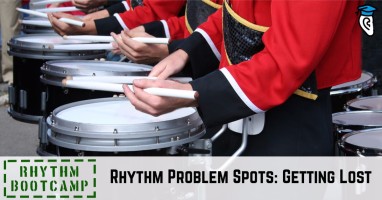 All musicians have had that moment when they find themselves playing their heart out, then pause to listen to those around them and find that they are lost! This week’s Rhythm Bootcamp tutorial has some helpful tips on how not to get lost and exercises to help you practice keeping your place with a sample track.
All musicians have had that moment when they find themselves playing their heart out, then pause to listen to those around them and find that they are lost! This week’s Rhythm Bootcamp tutorial has some helpful tips on how not to get lost and exercises to help you practice keeping your place with a sample track.
Want more advice on how to keep your place playing live music? Learn Jazz Piano gives some great tips for how to stop getting lost during other people’s solos and Taming the Saxophone discusses the importance of keeping time in music with some great tips and exercises on how to improve your sense of timing and rhythm.
Voice is the New Synthesizer
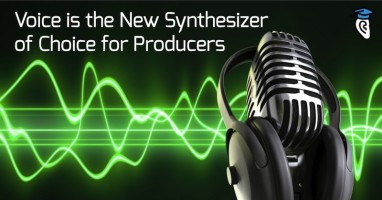 The human singing voice is the instrument we are all born with. Now, using synthesizers, it can be processed to create one-of-a-kind unique sounds. We have identified five tracks that use the voice in this way and take a step behind the scenes to discover how to create these new sounds. Read more in Voice is the New Synthesizer of Choice for Producers.
The human singing voice is the instrument we are all born with. Now, using synthesizers, it can be processed to create one-of-a-kind unique sounds. We have identified five tracks that use the voice in this way and take a step behind the scenes to discover how to create these new sounds. Read more in Voice is the New Synthesizer of Choice for Producers.
If this article on voice sampling inspired you to try it yourself, then you will need the right equipment! Music Radar analyzes their eight favorite vocal processing tools. If you need an introduction to sampling first, Ledger Note has great advice to get you started.
As you venture into modern-day music production be sure to also check out these 141 tips from Build Your Sound on how to go about it.
A Harmonic Journey
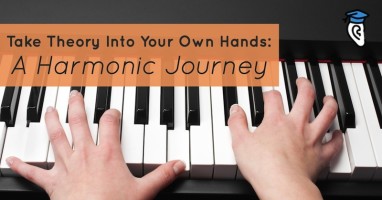 Do you find your music theory is detached from your instrument practice? Many musicians learn music theory alongside instrument technique, but don’t connect the two. Join us on a harmonic journey to connect the music theory of chords to real instrument playing. This also applies to those who play monophonic instruments, for example the flute, trumpet and voice!
Do you find your music theory is detached from your instrument practice? Many musicians learn music theory alongside instrument technique, but don’t connect the two. Join us on a harmonic journey to connect the music theory of chords to real instrument playing. This also applies to those who play monophonic instruments, for example the flute, trumpet and voice!
If you like the idea of chord shapes mentioned in that article, have a look at these 46 chord shapes for guitar from Guitar Player. It’s an easy-to-follow guide for learning basic chord frames which will eventually help you to vary basic chords.
When it comes to playing jazz and pop chords, classical pianists might need some extra help. The Collaborative Piano Blog has just the right advice on how to approach learning chords.
Solfa Sight-Singing
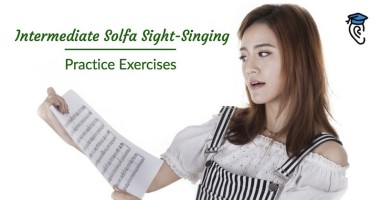 If you have always wished you could look at a sheet of music and sing the notes without knowing the tune, then learning solfa might be the tool you need!
If you have always wished you could look at a sheet of music and sing the notes without knowing the tune, then learning solfa might be the tool you need!
We recently published some Beginner Solfa Sight-Singing Practice Exercises. Now, if you are ready to take things to the next level check out our new Intermediate Solfa Sight-Singing Practice Exercises.
Feel like you are starting to move past the beginner level of Solfa? How To Sing Smarter has some great Solfa exercises for jazz singers to help your improvisation skills.
Play by Ear
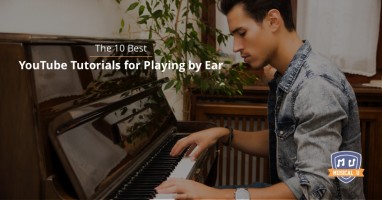 Playing by ear is a musical skill all musicians desire, and YouTube videos can be a good way to get started. However the sheer number of videos out there can be overwhelming, so to save you from sifting through hundreds of videos to find the good ones, the team at Musical U have identified 10 of the best YouTube tutorials for playing by ear. From a basic introduction to playing by ear, to the more specific skills required, there is something for everyone on their play-by-ear journey.
Playing by ear is a musical skill all musicians desire, and YouTube videos can be a good way to get started. However the sheer number of videos out there can be overwhelming, so to save you from sifting through hundreds of videos to find the good ones, the team at Musical U have identified 10 of the best YouTube tutorials for playing by ear. From a basic introduction to playing by ear, to the more specific skills required, there is something for everyone on their play-by-ear journey.
Learning musical skills online has its pros and cons. Online Pianist have a good summary discussing the advantages and disadvantages of learning to play piano and doing ear training online. If you do decide to further your online ear training, consider using one of the options reviewed by Skill Cookbook, where you’ll also find out exactly why it’s necessary to have a good ear.
I hope you have found something here to keep your musical goals moving forward this week – or maybe inspiration for new ways to develop your musicality. For all our latest resources and some music theory humour, don’t forget to like the Easy Ear Training and Musical U Facebook pages. I’ll leave you with a very geeky music theory joke from the Easy Ear Training page this week!

